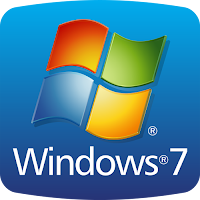After installing Windows 7, you may experience an issue in which the screen becomes completely black directly after startup. You can troubleshoot this problem by following the given steps.
If you want to fix Blue screen error, then follow this blog-How to Fix Blue Screen Error in Windows 7
Step1: Normally video adapter problems are the most common cause of black screen. Try to reinstall video driver.
Step2: If step1 cannot resolve this issue then check the registry issues.
Step3: Here is another option, if step2 cannot solve this problem then start computer in safe mode and run the system restore.
How to Use Backup and Restore in Windows 7
If you want to fix Blue screen error, then follow this blog-How to Fix Blue Screen Error in Windows 7
Step1: Normally video adapter problems are the most common cause of black screen. Try to reinstall video driver.
- Right-click the taskbar->click Task Manager->click the Processes tab-> click explorer.exe-> click End Process.
- Click File->click New Task (Run).
- In the Open text box, enter explorer.exe, and click OK.
- From the “Start” button, enter device manager in the search box and click “Device Manager”.
- Double-click Display adapters, right-click your display device, click Update Driver Software, and then follow the steps in the wizard that appears.
Step2: If step1 cannot resolve this issue then check the registry issues.
- Right-click the taskbar->click Task Manager->click the Processes tab-> click explorer.exe-> click End Process.
- Click File->click New Task (Run).
- In the Open text box, enter explorer.exe, and then click OK.
- From “Start” button, enter “regedit” in the search box and then click regedit.exe in the search result.
- Browse to the following registry key: HKEY_LOCAL_MACHINE\SOFTWARE\Microsoft\Windows NT\CurrentVersion\Winlogon
- Click to select the WinLogon key, and then, in the right pane, click Shell. The value of Shell in the Data column should be explorer.exe. If the value of Shell isn't explorer.exe, double-click Shell, and then, in the Value data text field, enter “explorer.exe”, and then click OK.
- Close the registry editor, and then restart your PC.
Step3: Here is another option, if step2 cannot solve this problem then start computer in safe mode and run the system restore.
- Shut down computer and again restart and press F8 repeatedly.
- From Advanced Boot Options screen, choose Safe Mode and then press Enter. Now run the System Restore.
- Go to "Start" menu >click "Programs"> click "Accessories"> Click "System Tools."
- Click “System Restore". This action will bring up a system-restore window.
- Select "Restore my computer to an earlier time"> Click “Next".
- Follow the on-screen option and complete the process.
How to Use Backup and Restore in Windows 7








